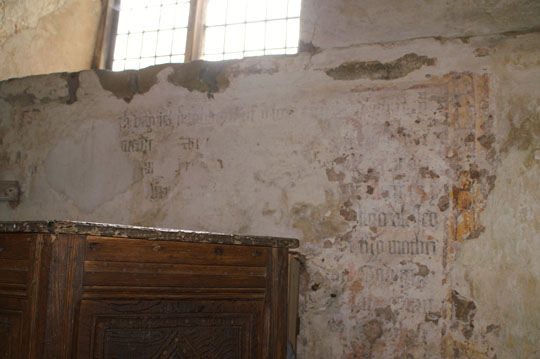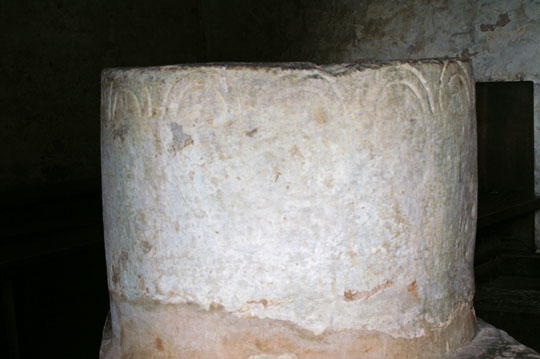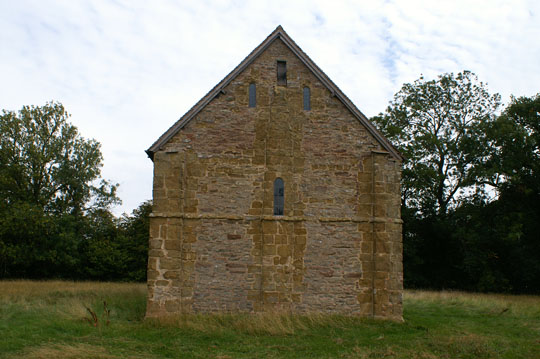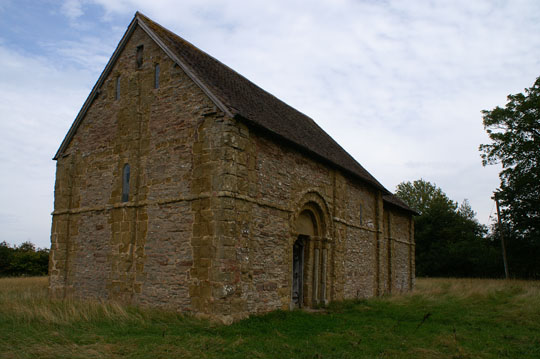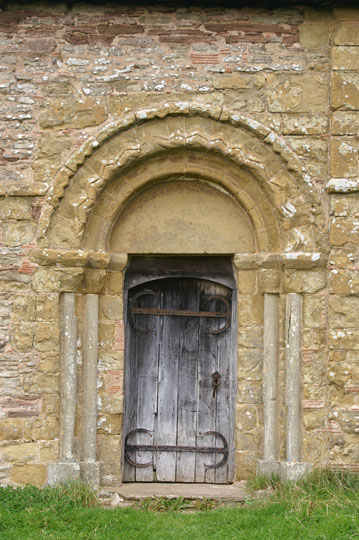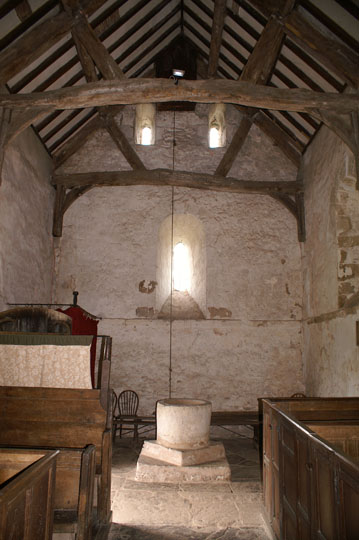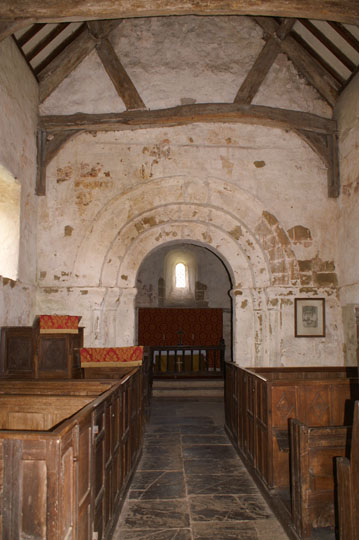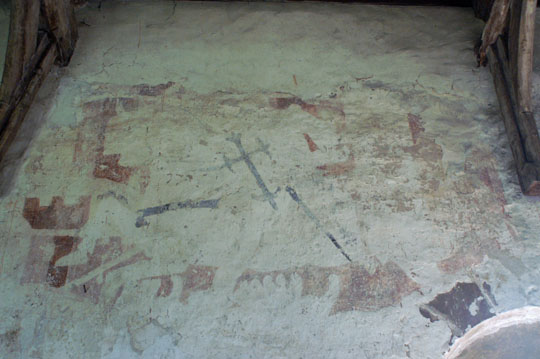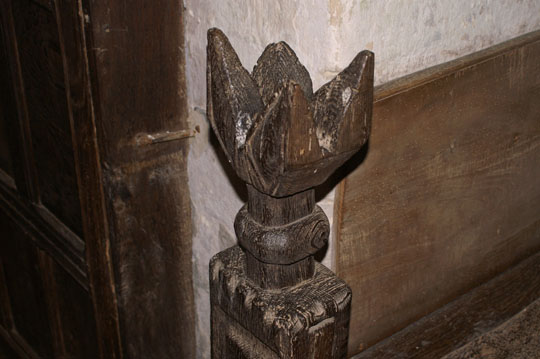|
Buried in the countryside high in the Clee Hills, Heath is just about the plainest, simplest church you will ever see - and therein lies its attraction. If you are capable of mentally blocking out presence of the wooden pews it really is possible to stand inside this gloomy unlit place and imagine oneself in the c12 when it was built. There are subtle traces of earthworks north of the church which indicate that this was a more substantial settlement in c12 than it is today. Nevertheless, by 1327 there were only seven families living here - plague exacted a heavy toll - so it is hardly surprising that the church is unchanged..
The date of its building is not precisely known, but around 1150 seems likely. At this point it might be worth making a comparison with, for example, the elaborate architectural cornucopia of Kilpeck which is 40 miles away and which was built 10 years earlier than Heath. What a difference a rich benefactor made then - as it does now.
This is a double-cell structure. The south door has some basic chevron ornamentation. The hinges themselves may well be Norman. There is a Gothic window behind the pulpit.
There are traces of mediaeval painting and biblical texts to be seen on the walls. How much remains to be uncovered, I don’t know.
A casual visitor would hardly find this remote place worth a visit. There must
|


